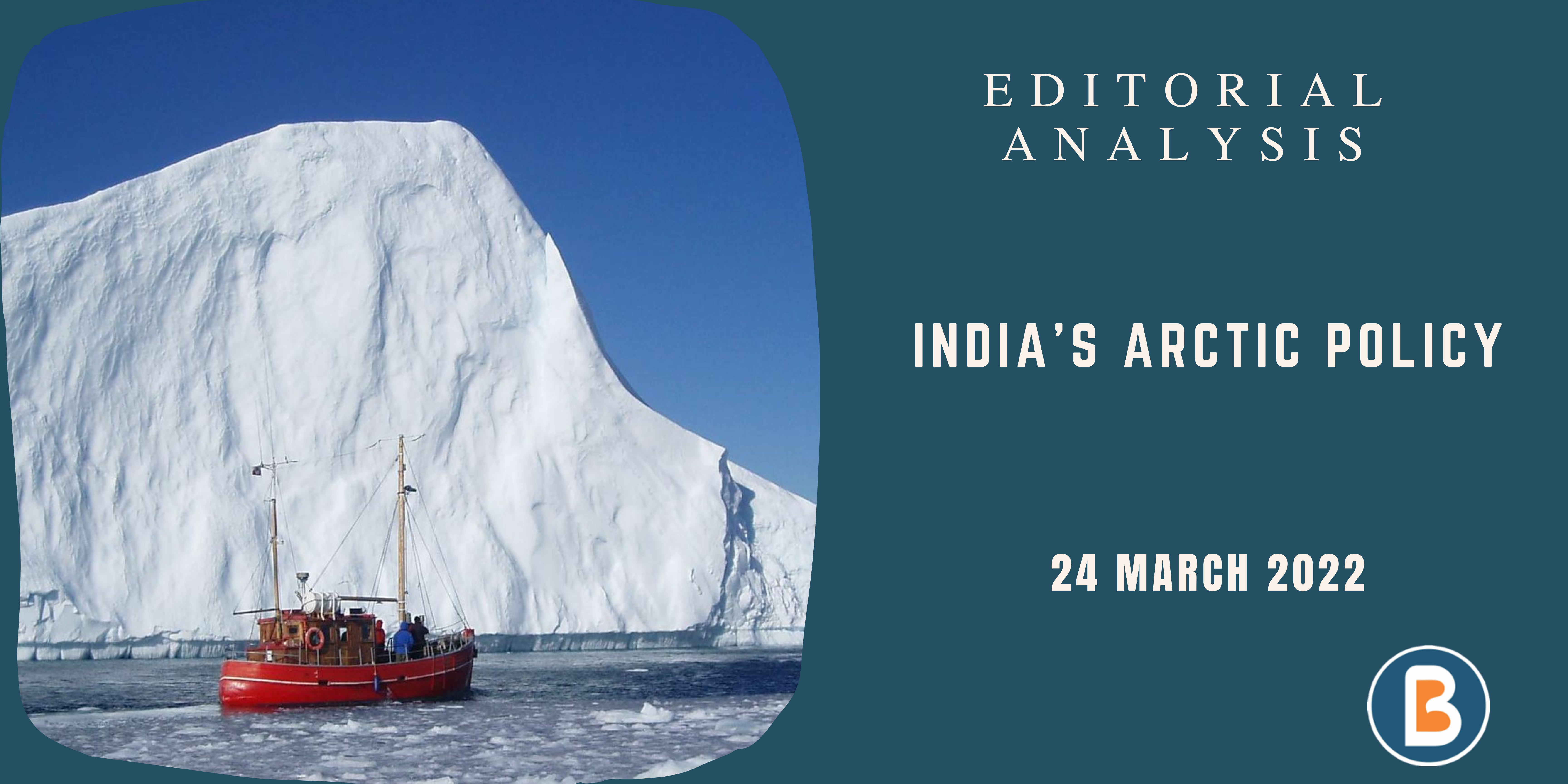India’s Arctic Policy
Context:
• India’s Arctic policy titled “India’s Arctic Policy: Building a Partnership for Sustainable Development” follows the draft which was released for public feedback on 31 December 2020.
About:
The Policy is divided into eight chapters based on six pillars:
• Science and Research
• Economic and Human Development Cooperation
• Climate and Environmental Protection
• Transportation and Connectivity
• Governance and International Cooperation
• National Capacity Building
This is the first holistic approach towards the Arctic by the Indian State.
Objectives Of the Policy:
• Even though the primary focus of the policy is towards a scientific approach, it addresses other diverse issues as well including climate change and environment, economic and human resources and geopolitical and strategic aspects.
• The intent articulated in the Arctic Policy of acquiring a dedicated ice-class Polar Research Vessel will hasten the process and provide impetus to India’s Arctic Programme.
• With the enhancement of a multidisciplinary approach to the Arctic, it is hoped that budgetary support to India’s scientific Arctic endeavours will be substantially augmented.
• The objectives outlined in India’s Arctic Policy are to be implemented through an Action Plan and a governance and review mechanism consisting of an inter-ministerial Empowered Arctic Policy Group (EAPG).
• The Policy further states that implementation will be based on timelines and prioritisation of activities, involving all stakeholders including academia, research community, business and industry.
• This mechanism is likely to enable better analysis, prediction and coordinated approach in the Government of India, lend policy coherence to the region and will result in better realisation of India’s strategic, military and economic interests.
Other Aspects:
• In the maritime domain, the Policy aims to strengthen training of seafarers in polar/ice navigation, build region-specific hydrographic capacity, build indigenous shipbuilding capacity of ice class standards, and expand India’s trained manpower in maritime insurance, chartering, arbitration and brokerage.
• It also targets building of wide-ranging institutional capacity on the study of Arctic maritime, legal, environmental, social, policy and governance issues, including application of UNCLOS (United Nations Convention on the Law of the Sea) and other Treaties governing the Arctic region.
• It is hoped that India’s Arctic Policy will promote a larger pool of experts in the government as well as academia and lead to better awareness of the Arctic in India.
Way Forward:
• The melting ice in the Arctic, combined with its geographical location providing the shortest sea distance between America, Europe, and North East Asia, is expected to revolutionise global marine commerce, which is currently done via the Malacca Strait and Suez Canal.
• The opening of Arctic maritime routes will result in significant cost and time savings, with the Northeast Asian ports of Japan, South Korea, and China benefiting the most.
• It would also alleviate China’s Malacca problem to a considerable part, but it would necessitate a re-evaluation of India’s strategic maritime advantage, which would allow India to shut off Chinese shipping supplies through the Indian Ocean in the event of a confrontation.
Source The Hindu




